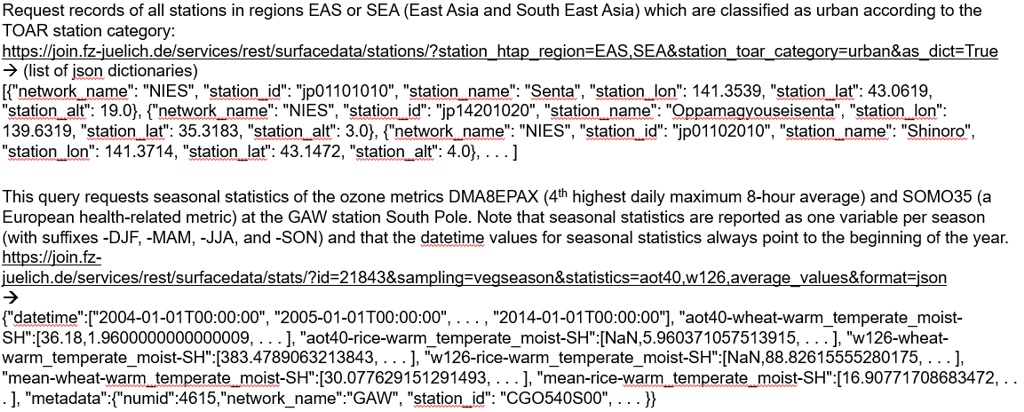The foundation of the IntelliAQ project is the TOAR database, the world’s largest collection of surface observation data of ozone, ozone precursor gases, meteorological variables, selected tracers for pollution source attributions, and selected results from numerical models of the atmospheric dynamic and chemical composition. Most of these data constitute timeseries of measurements at specific point locations, the “stations”. Various researchers directly submit their data to the TOAR data centre, where they are reformatted, quality controlled, and inserted to the TOAR database. If requested by the data submitters, the reformatted and augmented files from these direct submissions will also be published in a FAIR data service, including a doi for reference in journal publications, presentations, and elsewhere. However, the majority of data in the TOAR database is not “primary data”, but a copy of data from other databases and repositories.
Particular strengths of this globally harmonized database are a unified access to the data and the application of consistent statistical methods everywhere, which make the results comparable.
The data and metrics are made available via a graphical web interface (for documentation see: https://join.fz-juelich.de/static/documentation/JOIN_FAQ.pdf ), a REST service (for documentation see: https://join.fz-juelich.de/services/rest/surfacedata/ ) and as aggregated products on PANGAEA (https://doi.pangaea.de/10.1594/PANGAEA.876108 ). A Collection of software tools to facilitate access to and processing of data can be found in the Gitlab-Repository https://jugit.fz-juelich.de/m.schultz/toar-public-utilities.



